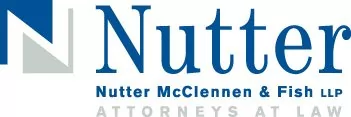Angel investors should be excited about recent legislative changes that are likely to improve the overall after-tax returns on their investment portfolios. As a result of the Protecting Americans from Tax Hikes Act (PATH), Congress changed the taxability of certain investments, specifically on the gains related to Qualified Small Business Stock (QSBS). On a now permanent basis, and subject to certain limits and requirements, 100 percent of the gains from the sale of QSBS will be excluded from taxable income and from inclusion in the alternative minimum tax calculation. Additionally, investors can utilize a portion of their QSBS losses in a more tax advantageous way than permitted for most other investments.
Overview
For over 15 years, Congress has, on a mostly annual basis, provided for partial or total exclusion of the gains related to sales of QSBS holdings. As might be expected, this preferential tax treatment was intended to increase investments in small businesses by producing higher after-tax returns to compensate for the high risk nature of such investments. However, because Congress played an annual political football game with the availability and quantity of the gain exclusion, angel investors have had little certainty around long term portfolio planning. Since PATH was passed, however, things have drastically improved. Angel investors now know that their successful small business investments will not be taxed at the federal level, as long as such investments qualify as QSBS.
Qualified Small Business Stock is defined in Section 1202(c) of the Internal Revenue Code. In order to qualify as QSBS, the investments must include the following requirements:
- The stock has been held for at least five years;
- The issuer has been a "Qualified Small Business" that is, a domestic C corporation with less than $50 million in assets, during substantially all of the taxpayer's holding period for the stock;
- At least 80 percent of the assets of the issuer are used in the active conduct of one or more qualified trades or businesses (which doesn't include health, law, accounting, and banking services);
- The stock was issued directly by the issuer or through an underwriter to the taxpayer; and
- The stock was issued in exchange for money or other property other than stock, or as compensation for services provided to the corporation, other than for underwriting services.
- For the 100 percent gain exclusion to apply, the QSBS investment must have been acquired after September 27, 2010. Certain lower exclusions may apply for QSBS investments acquired in other periods.
Tax Treatment, Limits and Losses
The most crucial part of PATH is that gains from the sale of QSBS investments will not be taxed, at least at the federal level, and are excluded from inclusion in the calculation of income for Alternative Minimum Tax (AMT) purposes. In the absence of such an exclusion, gains from sales of capital assets held for more than a year would be taxed as long term capital gains at the current federal rate of 15-20 percent, depending on the investment and the taxpayer's income tax bracket. Such gains would also be included for AMT purposes and would potentially be subject to the 3.8 percent net investment income tax (often referred to as the "Medicare Tax").
This exclusion maxes out for each taxable year at the greater of $10 million or 10 times the initial investment. Gains over such amounts will be taxed as long-term capital gains.
The HALO Report, which primarily tracks high risk / high yield investing in technology, life sciences and consumer products, typically reports that angels hold their investments for more than five years, and that such investments often yield between 2-10x invested capital over such period. As this is a near perfect match with the QSBS requirements, the gain exclusions promised by PATH have the potential to dramatically improve after-tax portfolio performance for most angels.
It is also important for angel investors to revisit how losses on unsuccessful QSBS investments are treated. Generally, losses on investments are capital losses, and therefore, they may only offset capital gains. Since capital gains are taxed at rates lower than ordinary income, it is almost always more beneficial to have losses that are usable to offset ordinary income. Luckily, Congress has set out an exception for losses on QSBS investments. For each taxable year, taxpayers may treat up to $50,000 in losses from QSBS investments as ordinary losses which will offset ordinary income. Thus, in the event that an angel investor has an unsuccessful QSBS investment, the loss results in a more valuable tax asset than those generated by non-QSBS investments.
Whether or not gains from the sale of QSBS investments will be taxed on a state level depends entirely upon the state. While some states automatically adopt the Internal Revenue Code and its amendments as they are made, other states have their own set of tax laws entirely. Generally, state tax rates for gains from the sale of QSBS investments vary from 0-8.0 percent.
Conclusion
In evaluating the potential for superior returns in the angel investment asset class, investors should consider not only the gross returns on investment (ROI) and internal rates of return (IRR) of the portfolio, but should also evaluate the tax treatment of such assets. The exclusion of QSBS gains has the potential to substantially improve the after-tax performance of the asset class and will continue to serve as a significant incentive to drive future angel investments.
Originally published on February 1, 2016
This update is for information purposes only and should not be construed as legal advice on any specific facts or circumstances. Under the rules of the Supreme Judicial Court of Massachusetts, this material may be considered as advertising.

